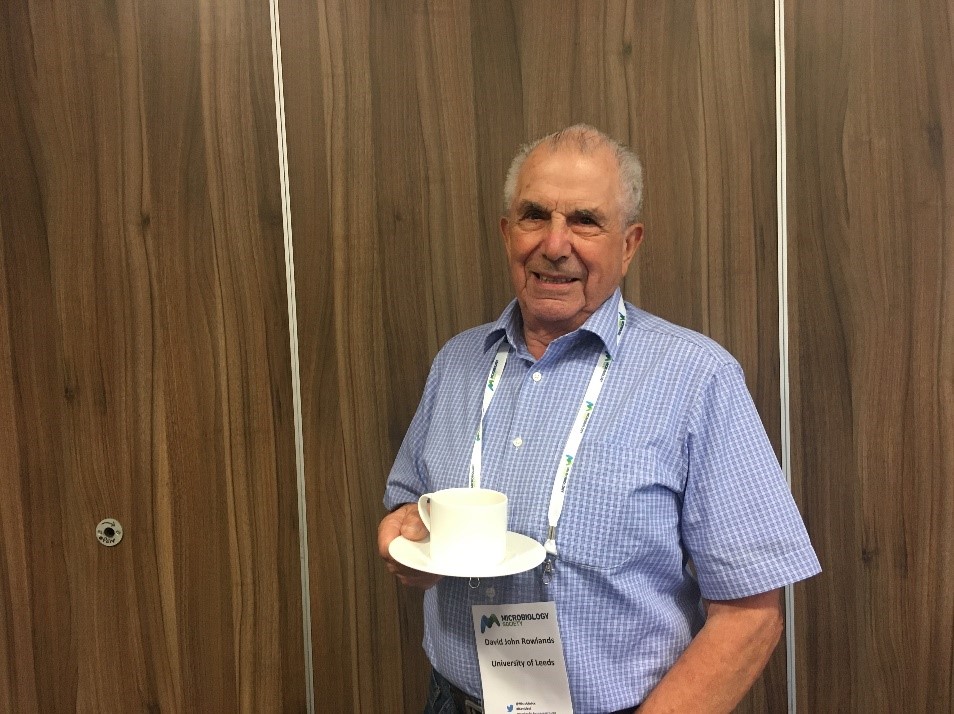David Rowlands collection

Each year, the Microbiology Society Council offer Honorary Membership to distinguished microbiologists who have made a significant contribution to the science. In 2019, David J. Rowlands (Emeritus Professor of Virology, University of Leeds) was appointed an Honorary Member.
This collection brings together Journal of General Virology articles authored by David Rowlands.
Collection Contents
-
-
Mouse respiratory epithelial cells support efficient replication of human rhinovirus
More LessHuman rhinoviruses (HRV) are responsible for the majority of virus infections of the upper respiratory tract. Furthermore, HRV infection is associated with acute exacerbation of asthma and other chronic respiratory diseases of the lower respiratory tract. A small animal model of HRV-induced disease is required for the development of new therapies. However, existing mouse models of HRV infection are difficult to work with and until recently mouse cell lines were thought to be generally non-permissive for HRV replication in vitro. In this report we demonstrate that a virus of the minor receptor group, HRV1B, can infect and replicate in a mouse respiratory epithelial cell line (LA-4) more efficiently than in a mouse fibroblast cell line (L). The major receptor group virus HRV16 requires human intercellular adhesion molecule-1 (ICAM-1) for cell entry and therefore cannot infect LA-4 cells. However, transfection of in vitro-transcribed HRV16 RNA resulted in the replication of viral RNA and production of infectious virus. Expression of a chimeric ICAM-1 molecule, comprising mouse ICAM-1 with extracellular domains 1 and 2 replaced by the equivalent human domains, rendered the otherwise non-permissive mouse respiratory epithelial cell line susceptible to entry and efficient replication of HRV16. These observations suggest that the development of mouse models of respiratory tract infection by major as well as minor group HRV should be pursued.
-
-
-
Monoclonal antibodies to a peptide of human rhinovirus type 2 with different specificities recognize the same minimum sequence
More LessMonoclonal antibodies (MAbs) raised against a synthetic peptide including residues 156–170 of protein VP2 of human rhinovirus type 2 (HRV2) have previously been shown to be of differing specificities. The basis for these differences has now been examined in greater detail by ELISA, radioimmunoprecipitation and virus neutralization. Reactions with a panel of HRV2 mutant viruses indicated that substitution of some residues could enhance the apparent activity of one of the neutralizing anti-peptide MAbs. For one such substitution, VP2 P164H, there appeared to be a correlation between increased neutralizing activity and enhanced binding. Mapping experiments identified two overlapping neutralization epitopes (amino acids 156–163 and 160–165) and several non-neutralizing epitopes. Although some differences in antibody reactivity were due to epitope specificity alone, the explanation for others was less obvious. Significantly, the majority of MAbs that recognized, and in some cases neutralized, native virus had the same minimum binding sequence and critical residue requirement as others which recognized virus particles only after distortion. This demonstrates that factors other than the linear sequence of the peptide can be crucial in determining the fine specificity, and hence biological relevance, of peptide antigens.
-
-
-
Modification of the Leader Protein (Lb) of Foot-and-Mouth Disease Virus
More LessSummaryTranslation of foot-and-mouth disease virus RNA for extended periods in rabbit reticulocyte lysates results in the appearance of a previously undescribed protein. A protein with similar properties can also be detected in BHK cells at late times after virus infection. Specific immunoprecipitation has shown that this protein (Lb′) is closely related to the smaller of the two leader proteins, Lb, although it migrates with an apparently higher M r in SDS-polyacrylamide gels. The conversion of Lb to Lb′ can be mimicked by treatment with carboxypeptidase B. It is suggested that C-terminal trimming of Lb to produce Lb′ results in an increase in negative charge and is responsible for its slower migration in SDS-PAGE.
-
